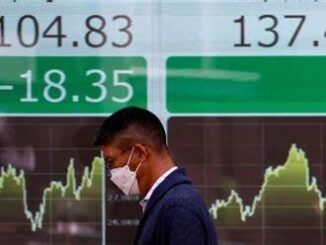
This morning’s Labor Department data on the addition of 175,000 jobs in April and an uptick in the unemployment rate to 3.9% brought a mixed reaction from economists focused on the housing market.
“An economy that is too hot is not good for interest rates,” said National Association of Realtors Chief Economist Lawrence Yun. “Hence, the latest news of some cooling in the labor market could mean the topping-out of mortgage rates this week before more sustained declines through the remainder of this year.”
“Do not expect any major declines in mortgage rates, however,” Yun added. “The federal budget deficit is massive. Heavy government borrowing will mean less money available for mortgage lending. Home sales were at near 30-year lows last year and still scratching along at that rate in the first quarter of this year. But there are 40 million more jobs and 70 million more people living in the country now compared to then. That is, there is a sizable stored-up housing demand to be released into the market in the upcoming years.”
Joel Kan, the Mortgage Bankers Association’s vice president and deputy chief economist, observed, “The economy added 175,000 jobs over the month, with a net upward revision for the prior two months, but this was lower than the 242,000 average for the 12 months leading up to this. Of note, average hourly earnings grew 3.9% from a year ago, a third consecutive deceleration in wage growth and the slowest since May 2021. This slowdown in wage growth indicates there has been some cooling in hiring and will help ease some of the upward pressure on service sector inflation, which has been one of the drivers keeping overall inflation elevated.”
However, Kan also pointed out, “The Fed indicated earlier this week that they are in no hurry to cut rates given the persistence of higher inflation. However, today’s report might give them some leeway to do so if the job market continues to weaken and if inflation trends start to follow. As indicated in our FOMC commentary earlier this week, we expect mortgage rates to decline later this year, but not as quickly as we initially expected.”
First American Financial Corporation’s Deputy Chief Economist Odeta Kushi reacted to the data by noting, “The soft jobs report may bring some immediate mortgage rate relief to the spring home-buying season – the 10-year Treasury yield dived below 4.5% in response to the jobs report, which will put some downward pressure on mortgage rates.”
Kushi also cited, “Residential building construction jobs are at the highest level since 2007, while non-residential are the highest on record (back to 1990). Remember that builders have faced a chronic shortage of skilled labor and that the number of homes under construction remains near historic highs. Continued growth in residential construction jobs, even modest growth as was this case in April, supports further improvement in the pace of homebuilding because building a home does not readily lend itself to outsourcing and automation. Homebuilding still requires manual labor as a key input into the production process. You need more hammers at work to build more homes.”
Eric Merlis, managing director and co-head of global markets at Citizens Bank, stated, “Today’s jobs numbers came in lower than expected, but can be interpreted as a positive sign that the economy is not getting overheated. The unemployment rate remained unchanged and, overall, this was likely a welcome report for the Fed which will remain data dependent but with a slight shift toward focusing on the employment side of the dual mandate of maintaining low inflation and full employment.”
Dr. Anthony B. Sanders, senior economist at Artesia Economics, stated the new data was at odds of President Biden’s claims that he reanimated the economy.
“Hey Joe! Where is the strongest jobs recovery in history??” Sanders wrote on his Confounded Interest blog. “BLS reported that in April the U.S. added just 175K jobs, a nearly 50% drop from the upward revised 315K (was 303K)…and a huge miss to estimates of 240K…in fact, as shown below, this was the biggest miss since Dec 2021.”



